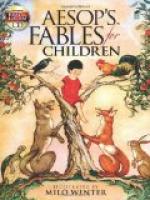|
This section contains 1,240 words (approx. 5 pages at 300 words per page) |

|
SOURCE: Kirby Congdon, "Aesop Revisited," in Américas, Vol. 18, No. 10, October, 1966, pp. 1-2.
In the following essay, Congdon suggests that fables, using animals as abstract qualities, show individuals that they cannot control God but they can control themselves.
Since there was probably never, at least in later times, any standard text of the fables, it was inevitable that both the range and their style of composition should change in accordance with the literary fashions of the day and the fancy of individual authors—Ben E. Perry. Studies in the Text History of the Life and Fables of Aesop. American Philological Association, 1936, (Philological Monographs, No. 7), p. 160.
The appeal of animal characters in fables lies in the fact that we, the reader, or listener, help create them in our minds. As with puppets and marionettes, we supply life to the disjointed action, expression to the immobile face, and finally meaning...
|
This section contains 1,240 words (approx. 5 pages at 300 words per page) |

|


